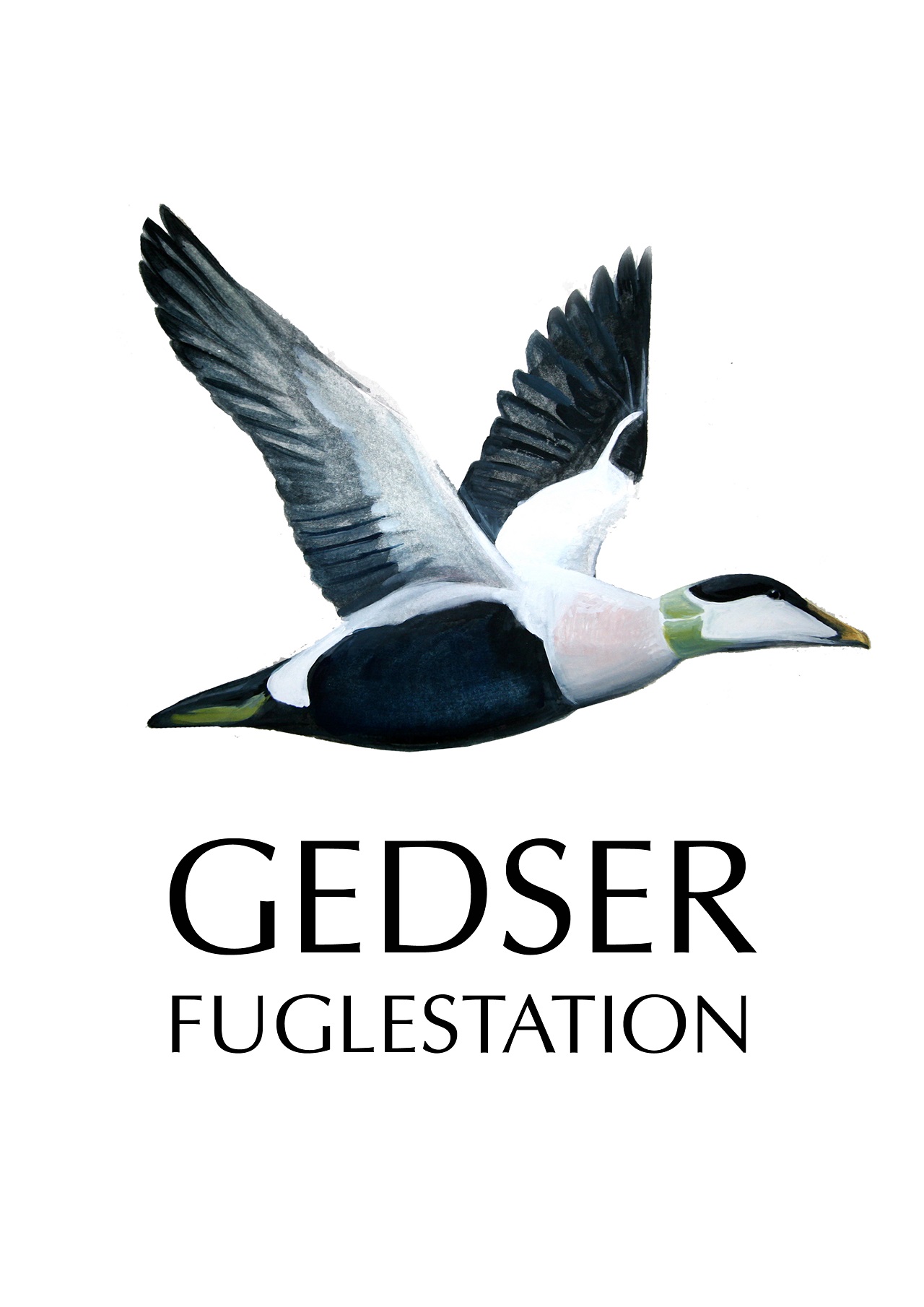Gedser Fuglestation Blog
Her på Gedser Fuglestations blog bringes korte nyheder i dagbogsformat om hændelser på fuglestationen.
Moments
And so it comes to the moment where this is my last blog for this visit. Reflection on the word moment perhaps is a useful convergence for ideas for the time spent here. As ever it has been enjoyable and the enjoyment is a composite of numerous points, special encounters that contribute to spending time at this special place.
A couple from Roskilde, who I've now met several times, say they like coming here because the point, the observatory, has a special atmosphere. They are right but I think that speciality varies from person to person, and time to time.
The light each morning when opening the nets has a sublime quality that eases one into the day, and each day is different. It can be moonlight reflecting off the sea, sometimes silver, sometimes blindingly brilliant, always magical in its ephemeral nature. The calls of birds that have arrived overnight: tac-tacing blackcaps, tic-ticking robins wrapped up in the calls of gulls and terns. The heady aroma, a mix of meadow, tree and sea. Then the wind, the breeze passing through the trees and the light creating soft dancing shadows with the leaves. Magical, ever-changing, a dynamic constant.
So this evening as I reflect on this beauty of nature I am reminded of a poem by the poet Kathleen Raine; here is the final verse of her poem, The Moment, it encapsulates my rich Gedser experience:
The sun that rose / From the sea this morning / Will never return, / For the broadcast light / That brightens the leaves / And glances on water / Will travel tonight / On its long journey / Out of the universe, / Never this sun, / This world, and never / Again this watcher.
Thank you Gedser for the refreshment and re-invigoration that you give me, a watcher, and to many others too!
And so to the more mundane, the ringing. Another low number day but hey who says that you have a divine right to large numbers.
Sparrowhawk/Spuvehog 1/-; Dunnock/Jernspurv 1/-, Robin/Rædhals 5/-; Garden Warbler/Havesanger 1/-; Blackcap/Munk 1/1; Willow Warbler/Løvsanger -/1; Spotted Flycatcher/Grå Fluesnapper 1/-; Pied Flycatcher 1/-. Total 13 (11/2)
Migration at Odden: Today was another blustery morning at the cape, with over 1100 birds counted migrating south for the winter. Most of these were ducks (Wigeon/Pibeand, Teal/Krikand, Pintail/Spidsand, Common scoter/Sortand, Velvet Scoter/Fløjlsand), whizzing across the skies in flocks up to 50 strong, often just above the choppy waves, sometimes cruising high above.
Several Great white egrets/Sølvhejre were spotted too, one flying directly above our heads (see photo below). The highlight was definitely five Arctic skua/Almindelig Kjove, the first two of which came within a couple hundred metres of our vantage point. On first impression, their silhouette and flight pattern reminds one of a tern: turning swiftly into the winds, flaring their wings out before tucking in for a steep dive, but the overall shape is rather larger and, of course, a darker steel grey colour against the waves. Whipping quickly in and out of sight, these birds were definitely something out of the ordinary.
From the south behind us, rising out of the golden fields, around a hundred birds of prey came tumbling towards the cliffs. 75 Sparrowhawk/Spurvehøg, along with 3 Hobby/Lærkefalk, and 2 Marsh Harrier/Rørhøg were spotted, although a White-tailed eagle/Havørn provided particular excitement (although that may have just been for me, given they are so rare in my homeland of the UK). With a max wingspan of 240cm, this bird dwarfs the tiny sparrowhawk by almost 5 times in length alone, soaring unconcernedly above the trees behind us. A wonderful sight indeed.
This afternoon the team went on a birding outing to the wetlands at Kaløgrå Fugletårn, an old water treatment centre turned nature reserve to the north of Lolland Island. We highly recommend to anyone who has not been! A relatively large site that is now almost completely grown over with rushes and grasses, surrounding several pans which, due to the recent lack of rain, are now only just covered in water.
The reserve looks out onto the sea. There is a hide set up which provides views across most of the area, otherwise grass tracks provide access. Several hundred Greylag geese/Grågås, Mute swan/Knopsvane, and Black-headed gulls/Hættemåge made up the bulk of the individuals, along with a number of wader species (including Curlew/Storspove, and Dunlin/Alminjelig Ryle).
A single Caspian tern/Rotverne – the largest tern species in the world – was spotted preening amidst the smaller gulls and waders. The seemingly overly-large bright red bill, coupled with its full black cap, made this spectacular bird stand out starkly from the surrounding shades of white, grey, and brown. Other species of note include Crane/Trane, Avocet/Klyde, and Garganey/Atlingand.

See all the day’s observations from Gedser Odde in DOFbasen.
People at the observatory: Lara Winsloe, Chris Sharp, Ole Friis Larsen.


